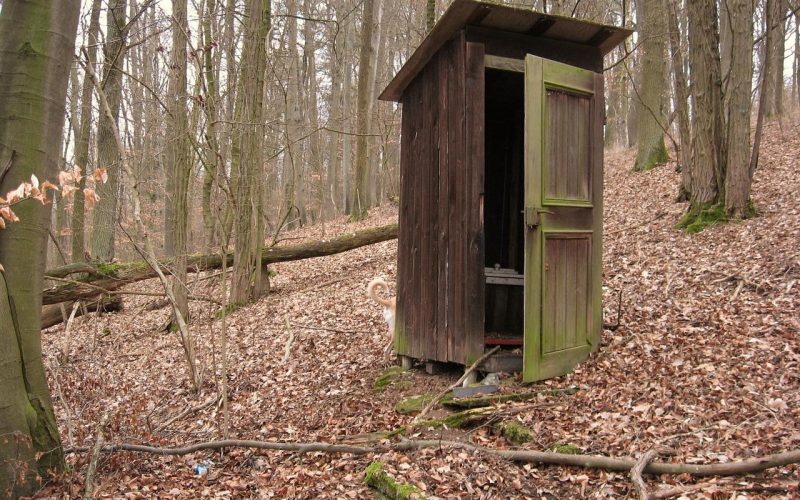Several factors cause different types of septic systems to greatly differ in size and design in your neighborhood and across the nation.
These elements may be the number of people living in the home, the type of soil, the site’s slope, the size of the lot, the presence of sensitive water bodies nearby, the weather, or even local laws.
Below are the ten most popular types of septic systems. Numerous additional types exist, so the list is not all-inclusive.
A homeowner or property owner will eventually have to decide which type of septic system to install, whether they are building a new home or are faced with the reality of having to replace an outdated septic system that has reached the end of its useful life.
Contrary to popular belief, not all systems have a single underground tank into which everything flows until it is emptied or decomposed.
It comes as no surprise that some systems perform better in some locations than others.
So, once the proper drain field location has been established, far from anything that can develop roots and damage equipment, it’s time to consider the best option versus the one that would be most practical for an installer service.
Here are the different types of septic systems. Please read on.
1. Conventional System
A decentralized wastewater treatment system (drain field) comprises septic tanks and trench or bed subsurface wastewater infiltration systems.
A single-family home or small business typically has a conventional septic system installed. The gravel/stone drain field is a long-standing construction method.
The name alludes to the drain field’s construction. This layout piped effluent from the septic tank to a small, underground, stone- or gravel-lined trench.
A piece of fabric or other material is laid on the trench to prevent sand, dirt, and other contaminants from entering the clean stone.
When wastewater reaches the soil below the gravel/stone trench, it is first treated by microbes after filtering through the stone.
The overall footprint of gravel/stone systems is relatively large and might not be appropriate for all residential sites or climates.
2. Chamber System
Since they have been used extensively in many states for over 30 years, gravel-less drain fields have supplanted gravel systems as a standard technology.
They can be made of various materials, including synthetic ones like expanded polystyrene media, fabric-wrapped pipes, and open-bottom chambers.
Gravelless systems significantly reduce carbon footprint and can be made from recycled materials. The chamber system illustrates a gravel-less system.
The chamber system is an alternative to the gravel/stone system. Its main benefit is increased ease of delivery and construction.
Furthermore, they are well suited to locations with high groundwater tables, variable influent volumes (such as those at vacation homes or seasonal hotels), a lack of gravel, and easy access to alternative technologies like plastic chambers.
A network of interconnected chambers makes up this kind of system. Soil covers the area around and above the chambers. Water from the septic tank is piped into the chambers.
The wastewater and soil interact inside the chambers, and microbes in or near the soil treat the effluent. This is one of the different types of septic systems.
3. Drip Irrigation
This strategy is perfect for homes where the existing landscape must be used and where installing the septic system in a lovely open field may not be feasible.
With drip irrigation, wastewater is pumped into a system of pipes and channels 8 inches beneath the ground’s surface.
The pump-out block and the channels must be kept clear through filtering and routine maintenance, though, because the connections in this system are pretty intricate. Otherwise, likely, the channels will quickly clog and stop working.
4. A low-pressure Septic System
While the low-pressure method works better in soil areas where the ground is less cooperative, it is not an alternative septic system.
However, instead of waiting for gravity to do all the work, this system uses a low-pressure pumping effect to force water into the tank and out to the soil.
As it moves and spreads, water drains and dissipates into the surrounding soil more quickly.
5. Aerobic Septic System
Anything organic is greatly destroyed by oxygen. This is a well-known biological fact, particularly concerning decaying matter.
The Aerobic Septic system exposes wastewater to oxygen, hastening the breakdown and later evaporation processes.
When the water passes through the system, it is usually cleaner and evaporates much more quickly than in other systems. This is one of the different types of septic systems.
6. Mound System
Mound systems are an option in shallow soil, high groundwater, or shallow bedrock areas. Inside the built-up sand mound, you can find a drain field trench.
Septic tank effluent travels to a pump chamber, is measured, and pumped to the mound.
The effluent is treated as it enters the trench, passes through the sand filter, and then disperses into the native soil.
Furthermore, Mound systems require significant space and recurring maintenance, although they can be a good solution for some soil conditions.
7. Recirculating Sand Filter System
You can build systems for filtering sand above or below ground. Septic tank effluent travels through a pump chamber to the sand filter, where it is then pumped.
The sand filter is frequently a concrete box with PVC lining filled with sand.
The pipes at the top of the filter receive effluent pumped through them at low pressure.
As it filters through the sand, the effluent is treated as it exits the pipes. After that, the treated wastewater is released into the drain field.
Furthermore, Sand filters are better for sites with high water tables or those close to water bodies because they offer a high level of nutrient treatment.
Still, they are more expensive than a traditional septic system. This is one of the different types of septic systems.
8. Evapotranspiration System
Systems for evapotranspiration have specific drain fields. A watertight material lines the base of the drain field for the evapotranspiration system.
The effluent evaporates into the air after it enters the drain field. Unlike other septic system designs, the effluent never filters into the soil or reaches groundwater.
Systems for evapotranspiration are only effective under particular environmental circumstances.
However, the environment must be dry with sufficient heat and sunlight. These systems function well in shallow soil but could fail if it rains or snows too much.
9. Constructed Wetland System
A constructed wetland replicates the filtration procedures in natural wetlands. The wetland cell receives wastewater from the septic tank.
The wastewater is then treated by microbes, plants, and other media that remove pathogens and nutrients as they pass through the media.
The wetland cell typically consists of an impermeable liner, gravel, sand fill, and suitable wetland plants that must endure a permanently saturated environment.
However, You can use either pressure distribution or gravity flow in a wetland system.
Wetland wastewater may exit the wetland and flow into a drain field, where the soil will continue to be treated.








